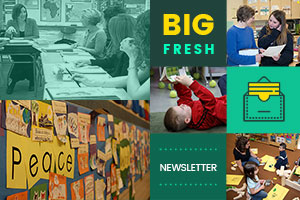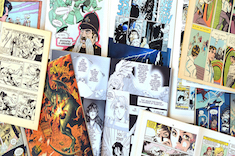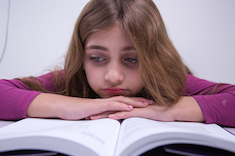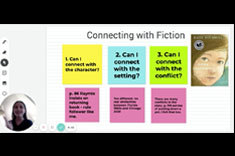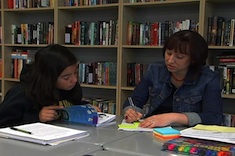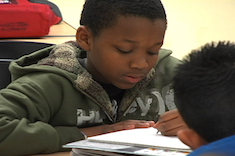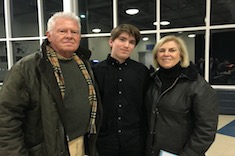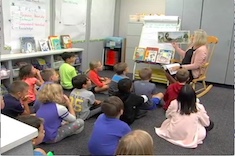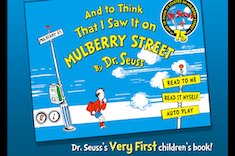Library
Choice Literacy Articles & Videos
The Choice Literacy library contains over 3,000 articles and 900 videos from 150+ contributors. Classic Classroom and Literacy Leadership subscribers have access to the entire library. Content is updated continuously, with five to six new features published each week.
Latest Content
January 31, 2020 Creativity and Community
This week we look at partnerships in literacy workshops.
Writing Partners
Partner work is an essential component of many literacy workshops. Dana Murphy explains how she is intentional in building thoughtful routines and expectations for partner work in her fifth-grade classroom.
January 24, 2020 Kindness in the Storm
This week we look at how to help traumatized children in classrooms.
Exploring Author’s Craft in Graphic Novels
Christy Rush-Levine finds her middle school students need more support and scaffolds to understand authors’ craft in graphic novels.
January 17, 2020 I See You
This week we look at visual learning and graphic novels in classrooms.
Writing Partner Feedback in Fifth Grade
Fifth-grade writers in Franki Sibberson’s classroom encourage each other and suggest revisions to their opinion-writing drafts in partner teams.
Trauma and Literacy
Jen Schwanke remembers her own experiences with trauma as a scared young girl, and how one kind teacher made all the difference in putting her on the path to healing. This makes her ponder the power of literacy in reaching wounded students in our midst.
Kids Teaching Kids: Student-Led Lessons
Nawal Qarooni Casiano outlines the process for empowering students to lead lessons for classmates.
Pairing Video Clips with Text: The Great Depression
Mark Levine has his middle school students “closely read” paired videos as well as texts to ponder the value and accuracy of different historical sources.
Characters, Choices, and Graphic Novels: Eighth-Grade Reading Conference
Christy Rush-Levine confers with Nia over the graphic novel she is reading. They discuss the choices characters make.
Self-Esteem and Literacy: Understanding Jeff
Jeff is apathetic and unengaged. To help this middle school learner, Mark Levine needs to understand his history. Mark shows the power of interviews for connecting with struggling teen learners.
30-Second Pair-Share
Sean Moore leads his second graders in a quick pair-share to help everyone reflect on what they learned during independent reading.
Collaborating for Understanding in Writing
Mark Levine realizes explaining expectations for an essay assignment over and over again isn’t working. But when he has students write in pairs for a portion of his workshop, magic happens.
Reading Mats Build Confidence
Tammy Mulligan explains how the use of the popular “reading mats” can help build reader confidence.
Appointment Clocks
Gretchen Schroeder uses “appointment clocks” to ensure her students meet with a variety of peers for partner work.
January 10, 2020 Nothing Buried Here
This week we look at tools for literacy instruction.
Building Conversation Skills in Book Clubs
Fifth graders use a visual tool to help them build on each other’s ideas in book clubs. They are applying a strategy demonstrated in an earlier minilesson taught by Dana Murphy.
January 3, 2020 Letting Go
This week we look at teacher modeling in literacy workshops.
It’s All in the Details
Tara Barnett and Kate Mills find their middle school students need some scaffolding to tease out essential details in literature.
Minilesson: Building Conversations in Book Clubs
Dana Murphy leads a minilesson on book club conversations, using a fishbowl strategy and building blocks to support more sophisticated discussions.
Writers Make Plans
Tammy Mulligan considers the rituals she has for preparing to write, and then uses what she learns in classroom writing workshops.
December 13, 2019 Norwich
This week we look at easy and fun classroom literacy events and celebrations.
December 6, 2019 Just Say Yes
This week we look at creative literacy instruction before holiday breaks.
Community Timeline Project
Katherine Sokolowski uses the Community Timeline Project to bring together students and older community members around history and writing. Includes a downloadable interview guide to help students record the interviewee’s life story.
Reading and Writing for the 100th Day of School
The 100th day of school has become an opportunity for classroom and schoolwide celebrations. Shari Frost provides many resources to ensure reading and writing are front and center on this special day.
November 22, 2019 Cue the Habit
This week we look at author studies in classrooms.
Teaching Theme Before the Holidays
Tara Barnett and Kate Mills take advantage of students’ knowledge of Rudolph the Red-Nosed Reindeer to teach the concept of theme before the holiday break.
A Quick How-to Writing Unit in First Grade
Bitsy Parks uses the short stretch before the holidays for a quick and fun how-to writing unit with her first graders.
Comparing Authors Minilesson
Jen Court uses text sets from three authors to help second graders ferret out different elements of the authors’ styles.
Scaffolding Instruction in an Author Study
Christy Rush-Levine scaffolds her middle-school students’ understanding of craft moves by moving from short stories to novels when studying specific authors.
Browse Content By
Type
Category
- Assessment Tools
- Big Fresh Archives
- Booklists
- Choice Numeracy
- Classroom Design
- Common Core
- Community Building
- Conferring
- Content Literacy
- Digital Literacy
- English Language Learners
- Equity
- Family Relations
- Free Samples
- Guiding Groups
- Leadership
- Literacy Coaches
- Mentor Texts
- Minilessons
- New Teacher Mentors
- Podcasts
- Poetry
- Quote Collections
- Reading Strategies
- Self Care
- Struggling and Striving Learners
- Talking and Listening
- Teacher Study Groups
- Teaching Reading
- Teaching Writing
- Word Study and Vocabulary
Author
- Melissa Quimby
- Nawal Qarooni
- Gwen Blumberg
- Julie Cox
- The Lead Learners
- Hannah Tills
- Josie Stewart
- Ruth Metcalfe
- Mallory Messenger
- Becca Burk
- Jodie Bailey
- Vivian Chen
- Mary Brower
- Tiffany Abbott Fuller
- Stephanie Affinito
- Ruth Ayres
- Leigh Anne Eck
- Heather Fisher
- Shari Frost
- Julie Johnson
- Suzy Kaback
- Gigi McAllister
- Shirl McPhillips
- Melanie Meehan
- Cathy Mere
- Debbie Miller
- Tara Barnett and Kate Mills
- Tammy Mulligan
- Dana Murphy
- Bitsy Parks
- David Pittman
- Brenda Power
- Heather Rader
- Matt Renwick
- Mandy Robek
- Christy Rush-Levine
- Gretchen Schroeder
- Jen Schwanke
- Brian Sepe
- Katherine Sokolowski
- Stella Villalba
- Jennifer Vincent
Grade Level
Choice Literacy Membership
Articles
Get full access to all Choice Literacy article content
Videos
Get full access to all Choice Literacy video content
Courses
Access Choice Literacy course curriculum and training

